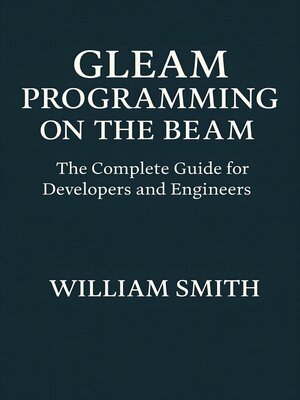Gleam Programming on the BEAM
ebook ∣ The Complete Guide for Developers and Engineers
By William Smith

Sign up to save your library
With an OverDrive account, you can save your favorite libraries for at-a-glance information about availability. Find out more about OverDrive accounts.
Find this title in Libby, the library reading app by OverDrive.



Search for a digital library with this title
Title found at these libraries:
| Library Name | Distance |
|---|---|
| Loading... |
"Gleam Programming on the BEAM"
"Gleam Programming on the BEAM" is a definitive technical guide for developers seeking to leverage the power of strongly-typed functional programming within the robust, concurrent ecosystem of the Erlang BEAM virtual machine. Beginning with foundational concepts, the book delves into the architecture and principles of the BEAM VM, the design of the Gleam language, and its position among languages like Erlang and Elixir. Readers are guided through Gleam's strict functional paradigm, the merits of its static type system, and practical project setup for seamless BEAM integration.
The book elegantly unfolds advanced language features, focusing on type system design, pattern matching, modularity, data structures, and type-driven error handling. It provides in-depth coverage of concurrency through the actor model, process management, and fault-tolerant supervision—crucial concepts for building scalable, resilient distributed systems. By exploring state-of-the-art patterns such as phantom types, API encapsulation, and safe serialization, as well as the nuances of interoperability with the extended BEAM ecosystem, the text empowers developers to construct robust, maintainable cross-language applications.
Beyond language and concurrency fundamentals, "Gleam Programming on the BEAM" addresses real-world application engineering—from testing strategies, continuous integration, and deployment, to monitoring, observability, and security for both localized and distributed Gleam systems. The book closes by charting the future of Gleam and the BEAM platform, offering insights into community development, upcoming features, and the maturing landscape of type-safe, concurrent programming. Comprehensive, clear, and forward-looking, this book is an essential resource for software engineers advancing functional and scalable solutions on the BEAM.







